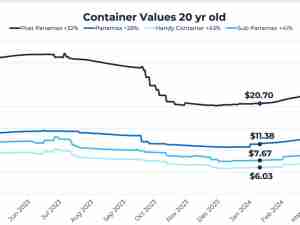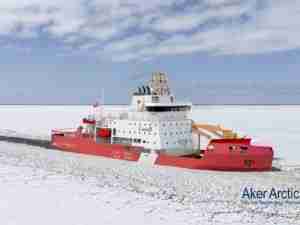Legislation was recently introduced in Congress to provide a limited exemption to the Harbor Maintenence Tax (HMT) to stimulate shortsea shipping on the Great Lakes/St. Lawrence Seaway System for the movement of non-bulk commercial cargo. Vessels moving bulk cargo would continue to pay the tax.
With elections fast approaching in the United States, observers consider that speedy passage of the bill is unlikely ' but various maritime interests on the Great Lakes have hailed the initiative as a step in the right direction.
To a certain extent, the bill mirrors measures taken in Canada over the past few years by the Seaway authorities to attract new shortsea business. These include reduced lock fees on the Welland Canal on a sliding scale basis for vessels carrying what qualifies as new cargo. Both the US and Canadian Seaway entities are also pushing hard to attract a feeder container service into the Great Lakes as ports on both the East and West coasts of North America face capacity challenges to meet the demands of surging import cargo from Asia.
Phil English (R-PA) and Stephanie Tubbs Jones (D-Ohio), members of the House of Representatives Ways and Means Committee, introduced the Great Lakes Shortsea Shipping Enhancement Act of 2006 in late July. (See July 31 AJOT, page 24.)
English has described the HMT as 'an albatross around the neck of goods and movement on the Great Lakes. By reforming the perverse law, we can make ferry service an effective option for moving people and goods out of ports like Erie and Cleveland.'
According to Steve Fisher, Executive Director of the American Great Lakes Ports Association, US maritime tax policies contrast markedly with those of countries in northern Europe, where shippers actually pay higher taxes to ship freight by road rather than by water.
Under current law, the HMT is assessed on cargo transported between US ports and cargo imported to US ports from other countries. The levy charges shippers the equivalent of 0.125% of a cargo's value, with the proceeds used to finance the cost of dredging harbor channels.
But the tax is reported to generate far more than what the US government allocates to servicing the nation's maritime infrastructure. The Harbor Maintenance Trust Fund currently has an estimated surplus exceeding $3 billion.
Through the HMT, the government collects some $700 million each year from shippers, but the percentage from domestic movements is relatively small.
Adolph Ojard, director of the Duluth Seaway Port Authority, noted that because the tax is only assessed once a cargo is loaded onto a vessel, it actually acts as an economic disincentive to utilize maritime commerce. 'This tax has pushed commerce ' particularly truck traffic ' onto already congested highways.'
Congresswoman Stephanie Tubbs Jones considers that waiving the HMT will encourage new shipping services and enable commerce such as steel and automotive parts to be diverted from road to water, while also offering environmental benefits through reduced pollution emissions.
Presently, there is a truck ferry between Detroit and Windsor, Ontario. Three other proposed ferry operations are at various stages of discussion, linking Cleveland and Port Stanley, Ontario; Erie, PA and Nanticoke, Ontario; and between Oswego, NY and Hamilton, Ontario.









